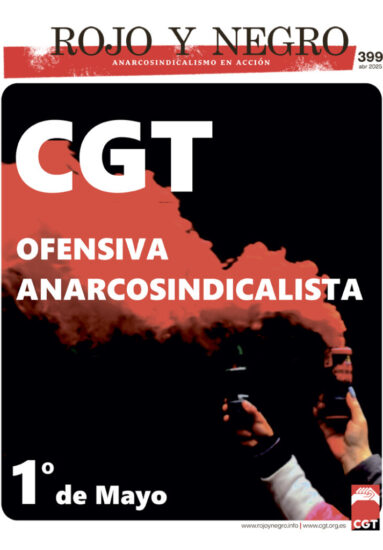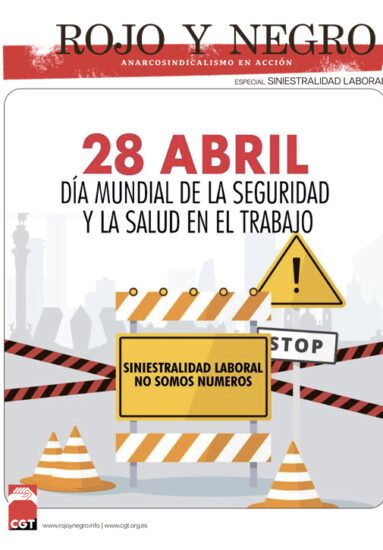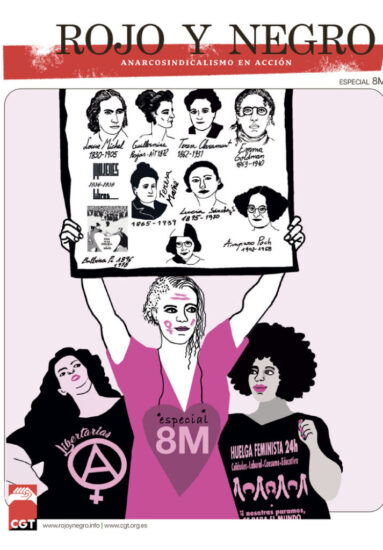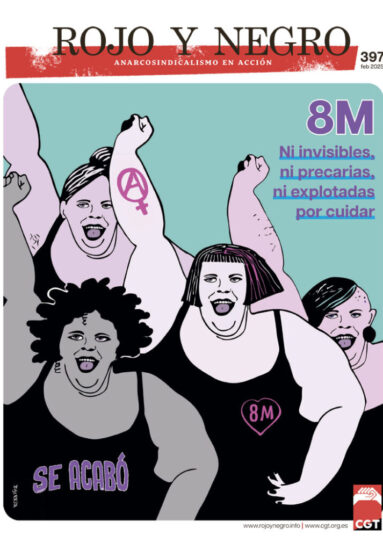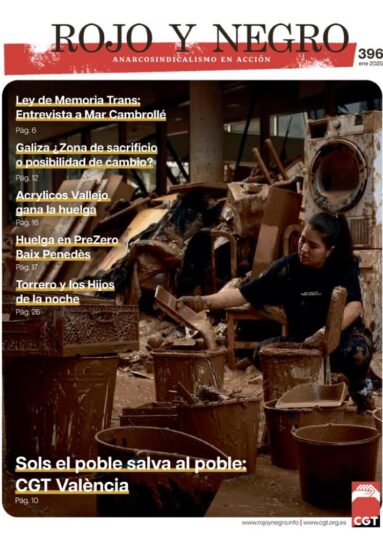La esperanza del retorno a aquellos “tiempos normales” se ha convertido hoy día en medicina cotidiana recetada por nuestro gobierno por medio de una prensa que nos inyecta con noticias económicas y comentarios. Mentiritas que nos den confianza, insinuaciones engañosas e interpretaciones absurdas de datos estadísticos por boca de Bernanke, Geithner, Summers y hasta Obama se supone mantendrán al ciudadano ciego fiel a un sistema en bancarrota… servil a los soberanos del capitalismo imperial.
Y la fiebre del oro ya apareció con los Nueveros – personas que ven en el 2009 el año de estabilización de los mercados y la llegada de un nuevo encierro bursátil de oro falso… viendo solamente motas de oro en la pirita económica que nos rodea, y no las motas de arsénico también en ella, y el hecho irrefutable que la pirita simplemente no es oro – no importa cuantos tontos no reconozcan la distinción.
La economía va en mejora, se nos dice por un gobierno y unos pocos “expertos” con lealtad identificable a causas e industrias (como Lawrence Yun, jefe economista de la National Association of Realtors – Asociación Nacional de Agentes Inmobiliarios – que hasta ahora no ha dado una en el clavo), y tras cualquier triste historia en la recesión se nos habla de “rayos de esperanza”, esos presagios alentadores que indican una recuperación inminente ; por lo regular mediante índices que marcan confianza en el consumidor, confianza entre bancos, y una Bolsa engañadora. Y a esas tres cosas, representando perspectivas optimistas, puedes añadir cifras que incluyen inicios de viviendas ; precios medios de vivienda ; ingresos corporativos ; beneficios para los desempleados ; o nivel de inventarios. Lo importante es encontrar un resquicio de esperanza en todos los males económicos que nos acosan.
Cualquier estudiante de Investigación Operativa, campo en que recibí mi entrenamiento inicial, te dirá que la mayoría de los llamados expertos en estos índices hacen sus cálculos con información incompleta, muchas veces sin saber distinguir entre variables causales o intermedias, para dar su opinión – preferiblemente optimista que por lo regular es lo que queremos oír – particularmente si aparenta ser soportado por datos históricos, algo relativamente común en los mercados financieros y bienes inmuebles.
En la vivienda, por ejemplo, una aparente frenada en el decline de precio de la vivienda no tiene por que implicar un aumento de optimismo… no cuando podemos ver que en 1 a 2 años los precios bajen del 10 a 20 por ciento, quizás mas. Ni el que podamos tener la menor idea de cual debiera ser el nivel de inventario de la vivienda ya que son muchos los que prefieren no poner su vivienda en venta, aunque necesiten hacerlo, mientras que los precios sean “tan bajos”. Así que ese reportado inventario de 10 meses, aunque históricamente sea muy alto, no es un número fiable… y 12 a 16 meses sea un periodo más cercano a la realidad del mercado. Además, seguimos hablando de “unidades de vivienda” cuando la realidad nos dice que la vivienda del futuro mermará en tamaño por lo cual la medida debiera ser en unidades de espacio utilizado, por lo menos en EEUU donde el promedio es casi de 180 metros cuadrados.
Y de la misma forma en que hemos considerado el estado de la vivienda, el análisis se puede emplear a los beneficios corporativos… y lo “positivo” de que el deterioro en beneficios ha frenado. ¿Y ? O la forma absurda de medir el desempleo, o la forma de determinar el “apropiado” nivel de inventarios, o la liquidez y confianza en los mercados al por mayor.
Para mi, el índice mas significativo de que las cosas, a corto plazo, no van para mejor es nuestra dependencia en el sector no-productor financiero. Son muy pocas las cosas que producimos y nuestros servicios demasiado caros, encabezado por nuestra asistencia medica… y hace seis años las compañías financieras ya recibían el 40 por ciento del total de beneficios corporativos en el país, un porcentaje obsceno… ¡doble del que tuvieran 15 años antes ! Esas mismas compañías que ahora están siendo rescatadas por este pueblo que no tiene la menor idea de lo que está ocurriendo.
Nuestro post-mortem del colapso financiero en EEUU, se nos dice – particularmente por políticos y muchos economistas, indica que tal colapso tuvo que ver con el fallo del país en regular “derivativas”, fondos de protección y otros malabarismos engañadores. Y eso gracias a esa cirugía legislativa del villano senador conservador Gramm quien hace 10 años logró destituir las viejas leyes de la era de la depresión que separaban las actividades de bancos, compañías de seguros y actividades de corretaje.
Aunque echemos la culpa a Gramm y al dueto en la Casa Blanca (Robert Rubin como ministro de Hacienda, y Bill Clinton como presidente que no veto esa legislación rapaz) por lo ocurrido, el problema es mucho mas complejo que eso, y tiene que ver con el sistema capitalista de EEUU que es en esencia un sistema inmoral que ha prosperado casi exclusivamente gracias a una deuda ilimitada. Desde que Carter dejara la presidencia, todos los gobiernos, Republicanos o Demócratas, con el consentimiento del Banco Central, han inflado una demanda irrealista y artificial dando acceso fácil a dinero, arriando al pueblo hacia deudas incomprensibles con altos intereses.
¿Por qué digo el sistema capitalista de EEUU ? Simplemente, por ser este, en total contraste al sistema capitalista ejercido por casi todas las naciones industrializadas, particularmente las europeas, depredador por naturaleza… al otro extremo de lo que debe ser capitalismo en una democracia social.
Y esto me lleva a las aserciones positivas que últimamente nuestro presidente, Barack Obama, nos viene regalando. La verdad sea dicha, se le puede creer tanto en materias económicas como a otros presidentes en el pasado… lo que dijéramos, para mejor o peor, que todos ellos están vinculados a un sistema que necesita una revisión general ; si, un overjól. Algo que no morador de la Casa Blanca se atreve a confrontar.
Los optimistas creen ver la luz al final del túnel ; pero esos “nueveros” creo que están totalmente equivocados.
© 2009 Ben Tanosborn
www.tanosborn.com/articulos/
Prospects of a quick economic recovery are but fool’s gold
Hoping for better times – for some, even the return to make-believe “yesterday” – has now become our prescribed daily medicine dispensed through the mainstream media by our government via injections of economic news or commentary. Confidence-building little white lies, misleading insinuations or, often, absurd interpretations of statistical data by Bernanke, Geithner, Summers, even Obama himself, are meant to keep us, the blind citizenry, faithful to a bankrupt system… subservient to the rulers of capitalist imperium.
And the gold rush is on with the O’niners – those who see 2009 as the stabilization year for the markets and the beginning of a running of the bulls in New Pamplona – seeing nothing beyond the specks of gold in the global economic pyrite that surrounds us. Never mind the reality of specks of arsenic in that pyrite, or the irrefutable fact that pyrite simply isn’t gold – regardless how many fools fail to see the distinction.
The economy is looking up, we are being told by government and a few “experts” with identifiable loyalty to causes or industries (such as Lawrence Yun, chief economist for the National Association of Realtors), and behind every new sad story in the recession there are those “glimmers of hope,” those encouraging signs that indicate some magic imminent recovery… usually in the form of self-created indices involving consumer confidence, inter-bank trust, and a deceitful stock market. And to those three, coloring them to suit the optimists’ outlook, you may add figures involving housing starts ; single-family home prices ; corporate earnings ; jobless benefit claims ; or inventory levels. The idea is to show a silver lining for every cloud that appears on the horizon.
Any student of operations research, and I happen to have received my early training in that particular field, would tell you that most self-proclaimed experts on these indices use incomplete information, often unable to distinguish between intervening and causal variables, to render an opinion – preferably optimistic, because that’s what people wish to hear – particularly if it appears historically supportable as it’s often the case with financial and real estate markets.
In the single-family market, for example, an apparent deceleration in the rate of price decline for homes should have little or no implication for an increase in optimism… not when we may look at prices 1 or 2 years from now 10 to 20 percent lower, perhaps more. Nor do we have any clue as to what “should be” the true inventory of houses in the market as many should be sellers, i.e. retirees, wait out what they estimate to be a bad time to sell. So that the reported 10 months inventory, as high as it may appear historically, is not a reliable number… 12 to 16 months probably closer to the reality of the marketplace. And, of course, we continue to talk in terms of housing units, when the reality is that we should be thinking more in converting to units of space-utilization since the average home in a future economy is likely to shrink in size considerably.
Just as we have done with single-family dwellings, we can apply the same type of analysis to corporate earnings… and the apparent positive take-off to the fact that the deterioration of earnings has slowed down. So ?! Or, the absurd way of measuring unemployment, or the determination of “appropriate” inventory levels, or even liquidity and confidence in the wholesale markets.
To me, the most telling and significant index why things won’t get much better in the short term is in our reliance on our non-productive financial sector. We produce few goods and too-expensive services (healthcare at the head of the list)… and six years ago financial firms were taking 40 percent of the total corporate profit. Yes, twice the percentage of 15 years before ! The same firms that now are being rescued by the people who have no clue in which direction the wind blows.
Our post-mortem of the financial collapse the United States has undergone, we are being told – particularly by politicians and economists with a more liberal outlook, does indicate that such collapse had to do with the nation’s failure to regulate derivatives and hedge funds thanks to the deregulatory surgery performed by villainous, conservative Senator Gramm a decade ago which in effect removed Depression-era laws separating banking, insurance and brokerage activities (Gramm-Leach-Bliley Act).
As much as Gramm and the idiotic duo at the White House which failed to stand in his way (Robert Rubin as Secretary of the Treasury and Bill Clinton as a president who did fail to veto such rapacious legislation) are partially to blame, the problem is far more complex than that, and has to do with America’s capitalist system being in essence an immoral system which has thrived almost solely on limitless debt. Since Carter left the presidency, every one of the administrations, Republican or Democrat, with the consent of the Federal Reserve, has pumped up an unrealistic, artificial demand by making money easily available, herding people into debt at high interest rates.
Why do I say America’s capitalist system ? Simply, because ours, in contrast to that capitalist system exercised by most industrialized nations, particularly those in Europe, is predatory in nature… much to the other end of the spectrum of what capitalism in a social democracy should be all about.
And that brings me to all these positive assertions of late by our president and instiller of economic confidence, Barack Obama. Truth be said, he is as credible in economic matters as all past presidents… which is to say, for better or for worse, he is married to a system that has been for long in need of an overhaul. An overhaul that no dweller of the White House will dare confront.
The optimists are quick to see the light at the end of the tunnel ; but those that I call the O’niners, have it all wrong.
© 2009 Ben Tanosborn
www.tanosborn.com
Fuente: Ben Tanosborn




